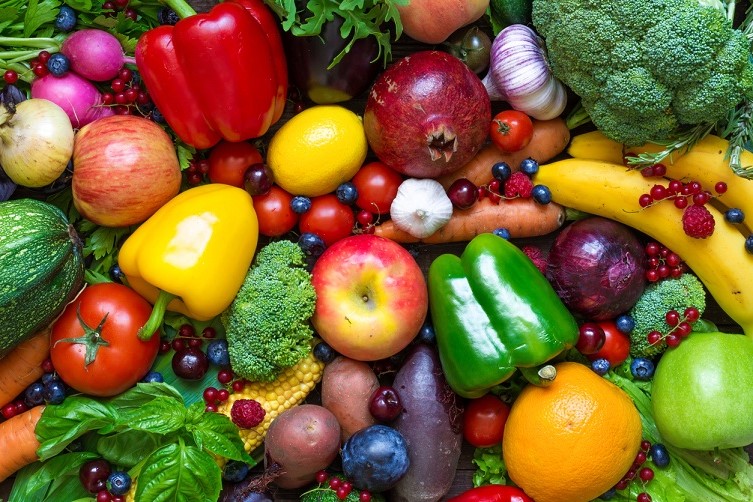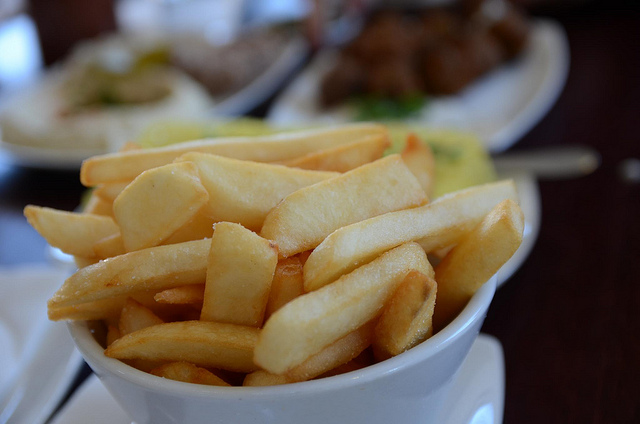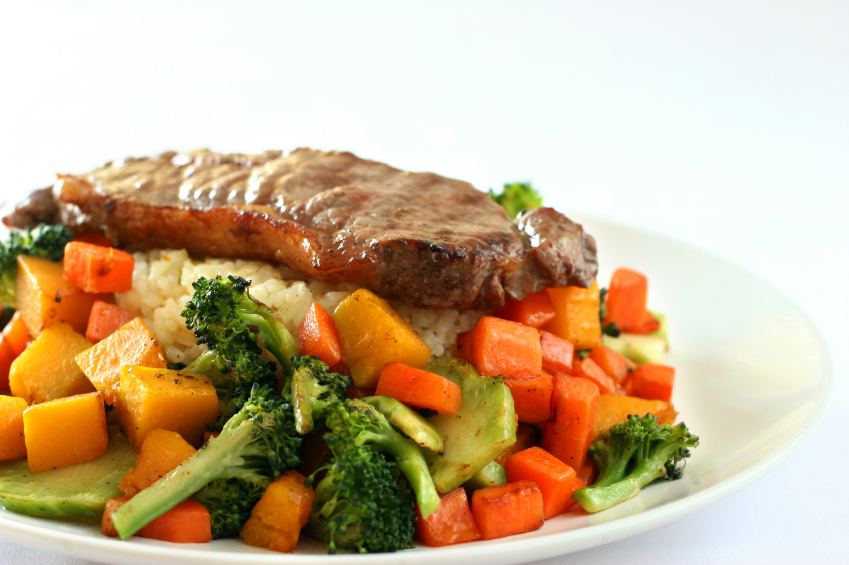Top 20 Terms

Do you find the info on food labels puzzling and frown-inducing? What about those nutrition terms that are bandied about in advertisements and magazines? My book “My Nutritionary” will help you understand nutrition easily and with less confusion (both print and ebook). To give you a taste, I’ve selected my Top 20 Terms here.
- Acesulfame K (acesulfame potassium)
An intense sweetener that supplies no kilojoules (Calories) and remains stable after heating, unlike saccharin and aspartame. Its long-term safety has been established – it’s safe. It does not contribute to dental caries. It is often used in combination with other sweeteners for a sweetness equal to sugar. Identified by the additive code number 950.
- Allergen
Any food or food constituent – usually a protein – known to produce an allergic reaction in ‘at risk’ or susceptible groups of people. The 10 well-documented food allergens are: cow’s milk, egg, crustaceans (crab, prawns, lobster), fish, peanuts (ground nuts), soy, tree nuts (almonds, cashews, Brazil nuts, hazelnuts, macadamias, pecans, pine nuts, pistachios, walnuts), sesame seeds, wheat and lupin. These 10 foods are responsible for around 90 per cent of all food allergy reactions. In addition, sensitive individuals may also react to cottonseed, poppy seeds and sunflower seeds.

- BARLEYmaxTM
Developed by CSIRO scientists in the late 1990s, BARLEYmaxTM barley grain contains twice the dietary fibre and four times the resistant starch of a regular grain. It works to improve health by delivering high levels of resistant starch and other dietary fibre components. BARLEYmaxTM has a unique blend of different types of fibre, contains 70 per cent more beta-glucan than oats, and has a low GI. It is used as the basis of high-fibre breakfast cereals, porridge, breads, wraps and bars.
- Carotenoids
A group of 500–600 naturally occurring compounds, which are pigments in plants and give fruit and vegetables their yellow-orange colour. Long recognised as antioxidants, carotenoids are under study for their ability to prevent cancer and heart disease, and also eye problems such as cataracts and macular degeneration, because of their effect on cell growth, gene expression and immune response. Examples are beta-carotene, alpha-carotene, lycopene, lutein, zeaxanthin and beta-cryptoxanthin. Some, like beta-carotene and alpha-carotene, are converted to vitamin A in the body.
- Choline
An essential nutrient related to the B vitamins. Small amounts are made in the body but this is insufficient to meet body needs. It has several functions in the body; it is a component of the neurotransmitter acetylcholine and also of lecithin, important for fat and bile metabolism. The typical diet contains twice the amount of choline currently recommended, so supplements are rarely needed. People who have swallowed gram quantities of choline a day as a supplement have a fishy odour and develop intestinal discomfort.
Rich sources: lecithin, egg yolks, wheat germ, liver, meat, brewer’s yeast, legumes (particularly soy beans), whole grains (particularly maize), nuts, green leafy vegetables.
- Discretionary foods
Often called ‘junk food’ or ‘treat foods’, these are foods and beverages that do not fit into any of the five basic food groups because they tend to be poor in nutrients (vitamins, minerals, fibre, protein) and high in kilojoules (Calories). In many studies, they are called ‘Energy-dense, Nutrient-poor’ foods. They are not a necessary part of the diet. Examples are most sweet biscuits, cakes and desserts; deli meats, bacon and sausages; ice-cream, confectionery and chocolate; savoury pastries and pies; commercial burgers; commercially fried foods; potato chips, crisps and other salty snack foods; sugar-sweetened soft drinks and cordials, sports and energy drinks; and alcoholic drinks (beer, wine, spirits).
They can add to life’s enjoyment, often in the context of social activities and family celebrations. But they should be eaten only in small amounts – which we don’t do. On average, just over one-third (35 per cent) of our total daily kilojoule intake comes from discretionary foods.

- Fructose (fruit sugar)
A monosaccharide found mostly in fruits and honey. It is one half of the sucrose molecule, which is most widely available as table sugar.
In terms of kilojoules, there is no real advantage of fructose over its chemical cousin glucose – they both contain the same number of kilojoules. Fructose is found in fruit, which also offer vitamins, minerals and fibre. Sucrose or glucose in lollies and sweets is often ‘empty kilojoules’ as it is not accompanied by fibre or any important nutrients for health.
In addition, fructose is metabolised differently to glucose. Some research suggests that large amounts of fructose (say over 100 grams a day) might contribute to the development of obesity and have undesirable effects on blood fats like triglycerides, which can lead to fatty liver as well as insulin resistance. At present, there is a whole movement to quit consuming sugar to avoid the intake of fructose.
But in the usual amounts that we find in fresh food, there is no reason to single out fructose. Plus the ratio of glucose to fructose is usually one to one which forces the liver to keep metabolising it as part of its usual mode.
In my view, we should focus on restricting the intake of excess kilojoules (which can come from a whole range of foods, even those without added sugar) and increasing exercise. At moderate levels of intake, the overall effect of fructose is likely to be neutral.
- Glucose (dextrose)
A monosaccharide (simple sugar) that is the building block of starch and glycogen, and is a constituent of sucrose or table sugar. During digestion, starch is broken down to glucose molecules and contributes to blood glucose, a fuel for the brain and muscles.
- Gluten
A protein present in wheat, rye, barley and, to a lesser extent, oats. People suffering from coeliac disease cannot tolerate gluten and must avoid these four grains. Gluten in a bread dough is responsible for the structure of the finished loaf. Thus grains without gluten (rice, millet) cannot be made into well-risen bread. Ancient forms of wheat like spelt and emmer still contain gluten.
- Hydrogenated fats
Fats and oils that have been chemically altered by adding hydrogen atoms across their double bonds, so that they become more saturated and solid at room temperature. They are not listed on food labels, but they occur in deep-fried foods like doughnuts, nuggets and fries as well as in movie popcorn, solid cooking margarines, the pastry in meat pies and sausage rolls, and non-dairy coffee whitener.
- Insulin Resistance
A condition where the body becomes relatively ‘insensitive’ to the hormone insulin, which controls the entry of glucose into the body’s cells. The body produces insulin but the tissues and muscles don’t ‘recognise’ it. The body then responds by making more, leading to insulin building up in the bloodstream, along with glucose, which is unable to ‘move into’ the cells to generate energy. It is linked to a sedentary lifestyle, being overweight, high blood fats and high blood pressure. Regular exercise and a diet low in refined carbohydrates, such as starches and sugar, will help make muscles more ‘sensitive’ to insulin. IR is the underlying basis of Metabolic Syndrome or Syndrome X.

- Kefir
Kefir is a fermented drink usually made from milk, although it can also be made from water, almond mylk or coconut water. It populates your gut with a wide variety of beneficial flora – the good guys – and helps restrict the growth of and/or kill the bad guys. It has a pleasant taste, like a mild yoghurt but not as acidic. While you can buy it, it’s often easiest to make your own at home. You’ll need to buy kefir grains or seeds to start your fermentation.
- Kombucha
A slightly sweet, slightly acidic fermented beverage based on tea, generally black but occasionally green or herbal tisane. Made from water, tea, sugar and a SCOBY (‘Symbiotic Culture Of Bacteria and Yeast’), it has been home-brewed and drunk for its health benefits for centuries in Japan, China, Korea, Russia, Germany and the USA. The SCOBY ferments the sugar and yields acetic acid (giving the drink its characteristic sharp taste), carbonic acid and carbon dioxide gas, which adds the bubbles. Kombucha is thought to have various health benefits including improved digestive balance and gut health from the bacteria, but there is little evidence to support such claims. You can buy commercially brewed kombucha, both pasteurised and unpasteurised, in various flavours from health food stores and supermarkets. It’s a refreshing drink containing far less sugar than iced teas or juices.
- Medium-chain triglycerides (MCTs)
Fats of a smaller size (shorter length of carbon chain) than ordinary fats and oils, which are classified as long-chain triglycerides. MCTs are broken down more readily and more completely in the digestive tract and go directly to the liver, where they are used as a source of energy and less likely to be deposited as body fat. MCTs were first extracted from coconut oil in the 1950s, to help people who had problems absorbing regular fats. Sources include coconut oil and butter fat.
- Oleic acid
A monounsaturated fatty acid with 18 carbon atoms and the most abundant of all the unsaturated acids. Found in most fats and oils, there is a high percentage in avocado, almonds, olive oil, canola oil, peanuts and most meats. Scientific abbreviation is C18:1 omega 9 or C18:1 n-9.
- Polyphenols (phenolic compounds)
A group of thousands of diverse compounds, polyphenols are the most abundant antioxidants in our diet. They are usually divided into flavonoids, non-flavonoid polyphenols such as ellagic acid, and phenolic acids such as chlorogenic acid and hydroxy benzoate. Many are potent antioxidants and can protect the body’s tissues from oxidation. They occur in spices, dried herbs, red wine, tea, cocoa and many vegetables and fruits especially dark berries, dark-green cold-pressed oils (like extra-virgin olive oil or hemp oil), nuts and seeds. Key examples are the resveratrol in red wine, capsaicin in chilli and paprika, thymol in thyme, cinnamic acid in cinnamon and rosmarinic acid in rosemary, thyme, oregano, sage and peppermint.

- Prebiotic
A non-digestible type of carbohydrate that stimulates the growth or activity of a number of ‘friendly’ bacteria in the large bowel. It provides ‘food’ for the bacteria and ensures the bacteria arrive in the large bowel in sufficient numbers. The most well-studied are fructo-oligofructose (inulin) and high-amylose starch.
- Probiotic
A term given to a preparation of live microbes, which can help restore the balance of microbes in the intestine and induce beneficial effects such as reducing diarrhoea, boosting immunity, overcoming harmful bacteria, reducing lactose intolerance and boosting activity against cancers. The live bacteria can be consumed freeze-dried or in a food such as yoghurt or a dairy drink. The most widely studied and well-documented probiotics are Lactobacillus GG (in Vaalia yoghurt), Lactobacillus acidophilus johnsonii (LC1 yoghurt) and Lactobacillus casei Shirota (Yakult).
- Trans fats
A family of fatty acids that chemically and nutritionally behave in a similar manner to saturated fats. They make up only a minor proportion of the fat in Australian diets and are found in low amounts (less than 5 per cent of the fatty acids) in butter, full-fat dairy, beef, lamb and solid forms of margarines/spreads. Margarines and spreads free of trans fatty acids are now available and are preferred.
- Vegan
A strict vegetarian who avoids all animal products including leather and fur. Many people have shunned meat for ethical reasons, for the sake of the planet or due to the cruelty of large-scale mass-farmed animals. Hence the rise of Meatfree Monday and other meat-free events. Vegan diets may be low in vitamin B12, iron, calcium and zinc and are not recommended for children, pregnant and breastfeeding women.
The bottom line
I hope this short extract will help you understand these top terms. If you want to learn more, grab yourself a copy of "My Nutritionary, Your A to Z Jargon Buster". Both a print and an ebook, it lists and explains over 600 additives, allergens, antioxidants, chemicals, nutrients, ingredients, acronyms and nutrition terms. To buy your copy of the print book, click here. To buy your copy of the eBook, click here.

